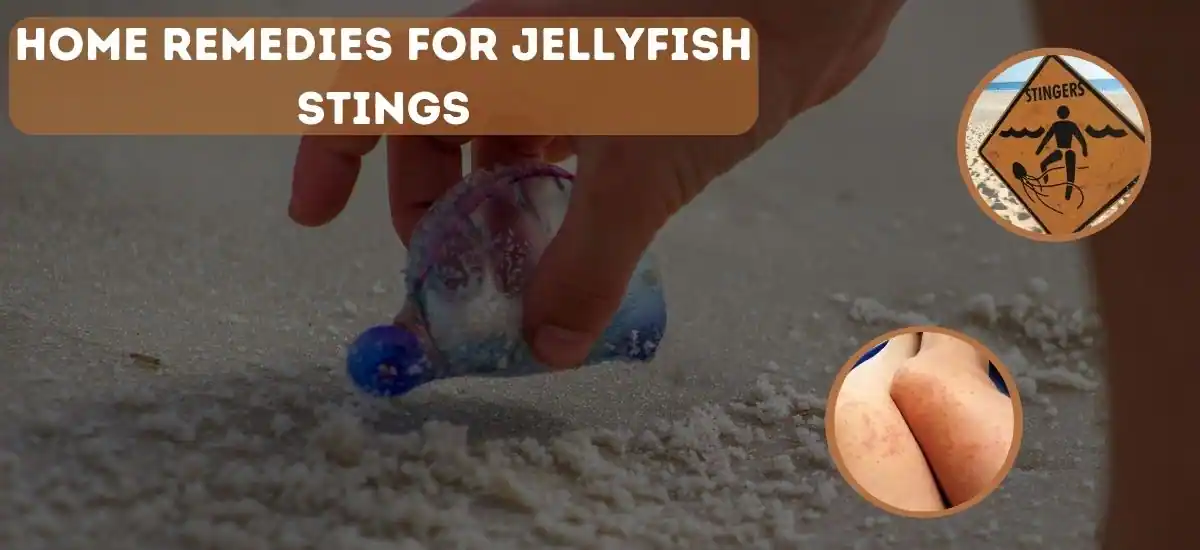When it comes to treating jellyfish stings, knowing the right home remedies can make all the difference. Immediate rinsing with vinegar to neutralize the venom, applying heat through hot water soaks to reduce pain, and using a baking soda slurry to further mitigate the sting’s effects are essential first steps. For ongoing symptom management, over-the-counter pain relievers, topical creams like hydrocortisone, and cold packs can provide significant relief.
It’s also vital to know when to seek medical attention, especially if symptoms are severe or an allergic reaction is suspected. Effective home remedies for jellyfish stings include using vinegar, hot water soaks, and baking soda slurry. Remember, prevention is key, so wearing protective clothing and staying informed about jellyfish presence can help avoid stings during beach outings.
Immediate Actions After a Jellyfish Sting
- Safety First: Before you dive into treatment, make sure the coast is clear—literally. More stings can happen if you don’t move to a safe area.
- Common Myths to Avoid: Hold your horses—don’t reach for that bottle of urine or fresh water! These can actually aggravate the sting.
- Initial Rinse: To kick off the treatment, rinse the affected area with saltwater. This helps wash away any remaining tentacles without triggering more toxins.
Effective Home Remedies for Jellyfish Stings

- Vinegar Application: Vinegar isn’t just for salads! Pouring vinegar over the sting can help neutralize the jellyfish’s venom. Just douse the area and let the vinegar work its magic for at least 30 seconds.
- Hot Water Soak: Turn up the heat by soaking the sting in hot water—not scalding, but between 104°F and 113°F. This can help reduce pain and inactivate toxins.
- Baking Soda Slurry: Mix baking soda with saltwater to create a paste, then apply it to the sting area. This concoction can help in further neutralizing the sting’s effects.
Pain Management and Symptom Relief
Dealing with the aftermath of a jellyfish sting doesn’t have to be a pain in the neck. Here are some easy ways to keep the discomfort at bay:
- Over-the-Counter Pain Relievers: Popping an ibuprofen or acetaminophen can help take the edge off the pain. Just be sure to follow the dosage instructions on the label.
- Topical Creams and Lotions: Applying hydrocortisone cream or calamine lotion can soothe the itching and reduce swelling. It’s like giving your skin a little TLC!
- Cold Packs: Applying a cold pack to the area can provide immediate relief from the sting’s heat and reduce swelling. Just wrap the pack in a cloth first to protect your skin.
When to Seek Medical Attention

Sometimes, a jellyfish sting can throw you a curveball, and it’s important to know when to call in the pros:
- Signs of Allergic Reaction: If you experience difficulty breathing, swelling of the lips or face, or a rash that spreads beyond the sting site, it’s time to seek emergency help.
- Severe Sting Symptoms: Severe pain, muscle spasms, or widespread redness might require professional treatment.
- Long-Term Care: For symptoms that persist or if there’s a large area affected, a visit to the doctor is warranted.
Prevention Tips for Future Beach Outings
An ounce of prevention is worth a pound of cure, especially when it comes to jellyfish:
- Protective Clothing: Wearing a rash guard or wetsuit can be your best defense against stings during a swim.
- Beach Awareness: Stay informed about jellyfish warnings at local beaches or areas known for high jellyfish populations.
- Safe Swimming Practices: Avoid areas where jellyfish are commonly found and always keep an eye out for warning signs.
Conclusion
Armed with these home remedies and tips, you’re now better prepared to handle jellyfish stings. While these encounters can be painful, quick and informed actions can significantly reduce their impact, letting you bounce back and continue enjoying your beach day.


